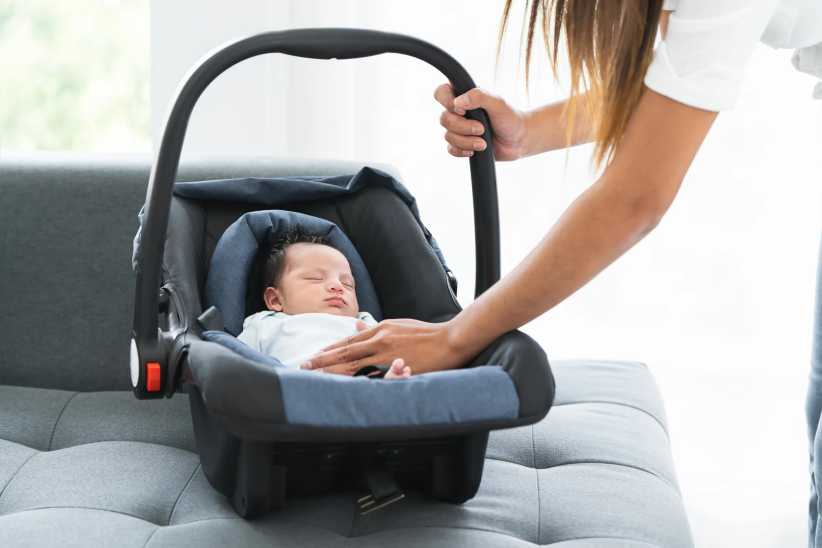 Ask a room of expectant women if they intend to breastfeed and almost 100 percent of them will say yes. The American Academy of Pediatrics recommends breastfeeding for at least 12 months and the World Health Organization encourages mothers to continue to breastfeed for two years, but only 49 percent of babies are breastfed at 6 months and only 27 percent are still breastfeeding at one year.
Ask a room of expectant women if they intend to breastfeed and almost 100 percent of them will say yes. The American Academy of Pediatrics recommends breastfeeding for at least 12 months and the World Health Organization encourages mothers to continue to breastfeed for two years, but only 49 percent of babies are breastfed at 6 months and only 27 percent are still breastfeeding at one year.
One of the reasons for these poor numbers is that problems arise in the first few days after birth, when mom and baby are trying to establish a breastfeeding routine. Three days after giving birth, 92 percent of the new mothers said they were having problems breastfeeding, which can cause them to lose confidence in their ability to successfully breastfeed and to feel pressure to supplement. However, research has shown that there could be another reason why moms at this stage are struggling with breastfeeding: there is a correlation between breastfeeding issues and epidurals.
When a woman receives epidural anesthesia, she also must get at least two bags of IV fluid to help keep her blood pressure from dropping (a side effect of the epidural). She continues to receive IV fluids throughout her labor, and as a result, both she and baby are full of excess fluid at birth. Within two days, the mother’s body re-absorbs the excess fluid, rendering her breasts more swollen, while her nipples become harder, flat, and more shallow, which can cause latching issues. A typical scenario for new mothers and babies is that the baby establishes a good latch on day one, but by day two, the nipple and breast has changed making latching difficult and frustrating for both mom and baby. Unfortunately, the mother is often blamed for having flat nipples and is given a breast shield (which is controversial among lactation consultants), or the baby is blamed for having a poor sucking reflex or being tongue-tied.
According to Dianne Cassidy, author and International Board-Certified Lactation Consultant, while this problem can be frustrating, it is only temporary. “If mothers realize the swelling and difficulty latching is just from the epidural, not forever…then they will have better breastfeeding,” she says. Since more than 80 percent of women will choose an epidural, Cassidy stresses the importance of helping women get past these temporary difficulties and not give up on breastfeeding. It is extremely important that the new mother’s support team offers her encouragement and tries to build her confidence. If she is having breastfeeding problems due to latching and swollen breasts, encourage her to loosen up the breast by pumping, to hand express, to enjoy as much skin-to-skin contact as possible, and to drink tons of water to help flush out the edema.
The effects of the excess fluid can also been seen in the baby. Within days of being born, babies tend to lose a percentage of their birth weight (10-15 percent), which can cause doctors to become concerned they are not getting enough milk, when in reality, the infant is just peeing out the excess fluid. If the weight of the extra fluid is not accounted for, then the mother who was once committed to exclusively breastfeeding may feel pressured to supplement with formula. This added stress and anxiety can negatively affect her milk supply
As pediatrician Dr. Sonia Gidwani explains: “These parameters are set for people who are not ready to make clinical judgments on patients. Ten percent is a number given out to nurses or people at the hospital who are discharging these babies to identify if the baby needs to be seen immediately. The real way to assess a child is to monitor the baby’s urine output: Day one, one wet diaper, day two, two wet diapers, and day three, three wet diapers. This an indication that there is enough fluid to profusing the kidneys. The baby should urinate at least once every eight hours. Parents can also look for pink crystals (uric acid crystals), which are signs the baby is getting dehydrated.”
There are two more notable correlations between epidurals and breastfeeding to highlight. Epidural usage increases the chance of an instrumental birth with forceps or vacuum extraction, which can affect the baby’s jaw, thus affecting the latch. The baby exhibits a tight jaw and a poor suck pattern, more choppy than sucking. Babies born with forceps and vacuum assistance are also at higher risk for jaundice, which can render them tired and uninterested in feeding. Dianne has seen great success in remedying this issue with cranial-sacral therapy for the baby.
Lastly, some studies have suggested that an epidural paired with the use of pitocin, the synthetic form of oxytocin, can negatively affect breastfeeding. “Labor epidural anesthesia had a negative impact on breastfeeding in the first 24 hours of life even though it did not inhibit the percentage of breastfeeding attempts in the first hour. Further studies are needed to elucidate the exact nature of this association.”
Given that 80 percent of women will receive an epidural during labor, it is vital to support those facing breastfeeding challenges. Tips for getting past breastfeeding difficulties include:
- If possible, birth in a nursing-friendly hospital that encourages breastfeeding and does not push formula.
- Discuss ahead of time with your pediatrician the expectation of weight loss for the baby.
- Room-in with the baby.
- Find a breastfeeding support group like La Leche League or a local breastfeeding support organization.
- Seek out a lactation consultant.
- Educate mothers on newborn behavior and breastfeeding patterns.
- Adjust expectations of baby’s eating pattern. Babies do not eat a lot in the first week or two; they take in very small amounts during each feeding: a teaspoon in the first day or so, increasing to an ounce in the first week.
- Encourage skin-to-skin contact.
- Have tools available to help alleviate swelling and fluid from the epidural, such as a hospital-grade breast pump, or self express.
- Adjust expectations of ourselves as birthing women. Breastfeeding can be hard, but you can be successful!
Debra Flashenberg is the founder and Director of the Prenatal Yoga Center. She is a certified labor support doula, Lamaze Childbirth Educator, and certified prenatal yoga instructor. She is continuously in awe of the beauty and brilliance of birth and is the proud mother of her son, Shay and daughter, Sage. Visit prenatalyogacenter.com for more info!











